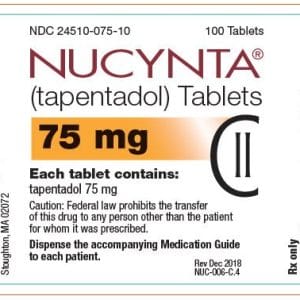Amy’s battle with insulin resistance
Diagnosing Insulin Resistance. Amy faced a lifelong battle with obesity, with her weight reaching an alarming 200 pounds when she was only eight years old. Despite trying every diet imaginable, she struggled to shed the excess weight throughout adulthood.
However, during her first visit to Nutritional Weight Wellness, Amy received a diagnosis that would change her journey. She discovered that she had been insulin resistant since childhood, which explained why traditional diets had been unsuccessful. Finally understanding the root of her weight struggles, Amy was able to incorporate the knowledge gained from the institution to lose 50 pounds and take control of her health.
Despite consuming healthier foods, she understood that balanced eating is crucial in managing her insulin resistance. The support from the institution helped Amy improve her life and obtain peace, particularly with her health. Today, Amy weighs 50 pounds less, and is a more confident and healthy woman. She is also an advocate of healthy eating.
She says, “If I could show one person, especially a child, that losing weight is achievable, I would consider myself successful in my mission. Success begins once you love yourself, which is what I’ve learned to do. I truly love myself now and want to show others they can, too.”
Amy’s story highlights the ongoing battle many people face with obesity and the associated health conditions that can arise. Despite her best efforts to lose weight through various diets, Amy was unable to achieve her goals until discovering that she was insulin resistant since childhood. Her visit to Nutritional Weight Wellness provided her with valuable insights into the right type of diet needed to manage her insulin resistance. And we are here to help you.
Let’s understand insulin resistance and explore options to prevent it.
What is Insulin Resistance?
Insulin resistance occurs when the body’s cells become less responsive to insulin, resulting in higher insulin levels in the blood. It is the precursor to both prediabetes and type 2 diabetes.
Eleanna De Filippis, an endocrinologist at Mayo Clinic, said, “With insulin resistance, the cells don’t react and don’t open up, resulting in excessive sugar in the blood. Over time, the pancreas keeps trying to regulate the blood sugar, producing more and more insulin until it wears out and can’t produce large amounts of insulin anymore. As a result, blood sugar levels increase to the point of being in the diabetic range.”
Insulin resistance is commonly associated with metabolic disorders such as type 2 diabetes, obesity, and polycystic ovary syndrome (PCOS). Several factors contribute to the development of insulin resistance, including:
- Obesity – Excess body fat or weight, particularly around the abdomen
- Sedentary lifestyle – Lack of physical activity
- Genetics – Family history of diabetes and genetic factors
- Poor diet – A diet high with highly refined carbohydrates, sugary foods, and saturated fats
- Chronic inflammation – Inflammatory conditions in the body obstruct insulin signals
What are the symptoms of insulin resistance?
Insulin resistance does not cause noticeable symptoms in its early stages. However, as it progresses, certain signs and symptoms can appear.
Dr. Eleanna De Filippis adds, “Very often, people with insulin resistance don’t have any symptoms at all. It is usually picked up by their doctor during an annual health exam or routine blood work. There are some signs of insulin resistance that your doctor may look for.”
Here are some common symptoms indicating the presence of insulin resistance:
- High blood sugar levels – Insulin resistance can lead to higher-than-normal blood sugar levels, which trigger symptoms such as increased thirst, frequent urination, and weakness.
- Increased hunger – When cells become resistant to insulin, glucose uptake weakens. It signals them to take more food and increases cravings for carbohydrates and sugary foods.
- Weight gain – Insulin resistance makes it challenging to maintain a healthy weight despite efforts to diet and exercise.
- Fatigue – The absence of glucose uptake by body cells reduces energy production, leading to fatigue and a lack of energy.
- Hormonal imbalances – Insulin resistance disrupts hormonal balance, particularly in women. It contributes to irregular menstrual cycles, excessive hair growth (hirsutism), and acne.
- High blood pressure or hypertension – Insulin resistance may cause hypertension, increasing susceptibility to heart disease and other cardiovascular-related conditions.
Testing and Diagnosing Insulin Resistance
Like other medical conditions, the diagnosis of insulin resistance also involves the combination of medical history assessment, physical examination, and undergoing laboratory tests. Here are common methods followed to test and diagnose insulin resistance:
- The Fasting Blood Glucose Test is a laboratory test that checks the glucose levels in the blood after fasting. It diagnoses and monitors diabetes mellitus, characterized by high blood sugar levels.
- The Oral Glucose Tolerance Test is a diagnostic test used to evaluate how your body processes glucose over time.
- The Hemoglobin A1c (HbA1c) Test provides an average measurement of blood glucose levels for approximately 2 to 3 months.
- The Insulin Levels Test measures insulin concentration in your bloodstream. This test assesses insulin production and resistance and diagnoses certain medical conditions such as diabetes and insulinoma.
- The Glucose Clamp Test, also known as the Euglycemic Clamp Test, is a specialized procedure used to measure insulin sensitivity and assess glucose metabolism in research and clinical settings. It involves maintaining a constant blood glucose level while manipulating insulin levels.
- The Homeostatic Model Assessment of Insulin Resistance refers to a mathematical method that estimates insulin resistance. HOMA-IR is commonly used in research and clinical settings to assess insulin resistance and monitor its progression. The calculation for HOMA-IR involves the measurement of fasting glucose and fasting insulin levels.
Additionally, your healthcare professional will consider other factors, such as your medical history, family history of diabetes or insulin resistance, body mass index (BMI), waist circumference, and other related symptoms, when making a diagnosis.
What are treatment options for insulin resistance?
The treatment of insulin resistance typically focuses on lifestyle modifications aimed at improving insulin sensitivity and managing blood sugar levels. However, there are medicines available to support the treatment:
- Metformin: This medication is commonly used to treat type 2 diabetes and has been found to be effective in improving insulin resistance. Studies have shown that metformin can improve insulin sensitivity, reduce insulin resistance, and lower blood glucose levels.
- Thiazolidinediones: These medications, also known as glitazones, work by decreasing insulin resistance and increasing insulin sensitivity. Thiazolidinediones are typically prescribed for individuals with type 2 diabetes or metabolic syndrome who are unable to manage their blood glucose levels with other diabetes medications.
- GLP-1 receptor agonists: These medications work by increasing insulin production and sensitivity and slowing down the absorption of carbohydrates from the digestive system. They have been found to be effective in managing insulin resistance in individuals with type 2 diabetes.
Our newest arrivals
- Healthy, Balanced Diet – Adopt a balanced and nutritious diet, including whole foods such as fruits, vegetables, whole grains, lean proteins, and healthy fats. Limit the consumption of sugary foods, refined carbohydrates, and saturated fats.
- Regular Exercise – Engage in regular physical activity, as it increases insulin sensitivity. Try cardiovascular exercises (such as brisk walking, cycling, jogging, or swimming) and strength training. Dietitians recommend having at least 150 minutes of weekly aerobic activities and strength training routines twice weekly.
- Weight Management – Maintaining a healthy weight improves insulin sensitivity. If you are overweight or obese, losing even a modest amount of weight can positively impact you.
- Medications – Doctors also prescribe medications to help manage insulin resistance. The most commonly used drug is metformin, which helps improve insulin sensitivity and reduces glucose production by the liver. Other medications, such as thiazolidinediones or GLP-1 receptor agonists, may be considered in specific cases.
- Stress Management – As chronic stress can influence the development of insulin resistance, engaging in stress-reducing activities like meditation, yoga, deep breathing exercises, or counseling can be beneficial.
- Regular Monitoring – Follow up with your healthcare provider regularly. It is important to monitor your progress, assess the effectiveness of the treatment plan, and make any necessary adjustments.
Work closely with your doctor to create a comprehensive treatment plan tailored to your needs. They can provide guidance, support, and ongoing monitoring to help manage insulin resistance effectively.






